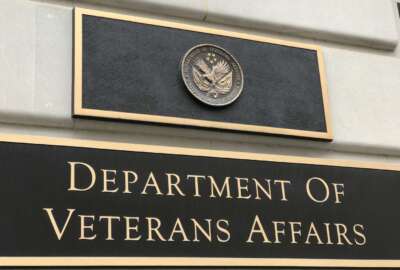VA spends billions without a crucial oversight tool
The Veterans Affairs Department has a system for detecting errors and fraud payments made for health care. suspended the Program Integrity Tool two years ago.
The Veterans Affairs Department has a system for detecting errors and fraud in payments made for health care delivered outside of the VA system. But VA suspended operation of the Program Integrity Tool nearly two years ago. That means tens of billions of dollars in payments have occurred without sufficient oversight. Details now on the Federal Drive with Tom Temin from the director for community care audits in the Office of the Inspector General, Jennifer McDonald.
Interview transcript:
Tom Temin
And let’s begin at the beginning here. Tell us about this tool, what it is, what it’s designed to do.Jennifer McDonald
So VHA’s program integrity tool is a consolidated post payment data repository. It brings data from all paid community care claims into one system, and it’s used for two things. It’s used, number one, for determining if health care claims should be billed to veterans for Copayments or to private insurance companies for the treatment of non service connected care. And then the second thing it’s used for is for supporting fraud, waste and abuse mitigation and detection activities. So those are really important efforts, and that would be something like as identifying duplicate length payment, for example.Tom Temin
Right. The implication I’m hearing is that it’s complicated. It’s not that just if you go to a community care facility, a veteran VA pays it, period the end. Sometimes you have a co pay as the veteran, sometimes they have other insurance that this particular piece of care should cover versus what the VA should cover. Lot of rules embodied in that tool.Jennifer McDonald
Correct. So our big concern about that tool not being operational has to do with the VAs ability to assess the claims for Community Care and whether they should be billed to private insurance companies for copayments or to veterans for copayments. And they have not been able to do that while that tool has been down, and so that impacts revenue collection for VHA as well.Tom Temin
Sure. Well, let’s start with why did they shut it down?Jennifer McDonald
So around February 2023, VHA paused operation of the tool because they became aware of issues such as claims being entered inaccurately into the system. They became aware of a defective code that added outpatient claims data to inpatient claims. Outpatients are when a veteran goes to see a doctor. Inpatient is when somebody’s in a hospital or something like that, where they’re staying overnight. They also identified duplicate claims. So with all these errors, they took it offline to assess okay, what’s actually going on and how many issues are there. And VHA did a deep dive and actually identified 18 specific issues that they needed to manage and deal with before they brought it back online. An example of one of the issues was multiple claims were being identified with the same unique claim identifier, when really each claim should have its own unique identifier, so the information was overriding itself.Tom Temin
So it sounds like bad programming, basically, or let’s say programming that needed a little more testing before deployment.Jennifer McDonald
Needed more testing, yes. There were some issues with the programming that needed to be made in there. It is complex because community care claims payment data goes through many different systems, six systems before all that data goes into the program integrity tool. So there is a lot of different data sources merging into this one tool that has to kind of align and assigned unique identifiers in the tool.Tom Temin
And who found the problems? Was it the inspector general office, or did these problems become apparent by the people actually doing the work and saying, wait a minute, we’re getting six claims here with the same number.Jennifer McDonald
VHA’s office of integrity and compliance became aware of it, and as they started, they picked up oversight of the tool when that program was set up and running in 2002. And they realized that there were some issues with the data. The IG had been aware of it, too. On our side, with our data analysts, they use some of the data for internal reasons for audits and stuff. But I think we were not aware of the scope of the issue until VHA became aware of it and took it off to do this deep dive. I don’t think they were aware of the scope of the issue either, until they took it offline and did that deep dive to see that there was actually 18 pretty significant different issues that needed to be addressed.Tom Temin
Right. It sounds like the addition and the expansion of the Community Care Program added to the complications of it.Jennifer McDonald
Yeah. Because over time, over the last couple of years and the community care programs expanded from the choice Community Care Program to with the mission act the Community Care program as it exists now. And there have been different data sources for paying claims for each of those programs, which, again, all go into the program integrity tool. So there are six different source systems that are feeding into the tool. So it is pretty complex.Tom Temin
No wonder anyone keeps track of it. We’re speaking with Jen McDonald. She’s director for Community Care in the Office of Audits and Evaluations at the VA Office of Inspector General. And earlier you said it not only affects the integrity or the ability to oversee payments, but also money coming into VA. Tell us more about that.Jennifer McDonald
Yes, so data from the program integrity tool is used by VA to assess community care claims. Some of the Community Care is eligible to Bill private insurers for co insurance or veterans for CO payments. So VA has not been able to assess any paid community care claims since the tool has been offline. So we estimated the IG estimated that that affected about 40 million paid claims, which was about $29 billion that have not been able to be assessed since it’s been offline. And so our concern, and the reason we put this out as a memorandum quickly, was that VA will need to address that backlog when it comes back online, and really go through all those claims to see if they are billable to private insurers or veterans.Tom Temin
Right. So they could have a potentially large find and claw back situation on their hands.Jennifer McDonald
Yeah. And so when we estimated the amount associated with that using some work we had done prior to estimate how many of those claims would be billable to private insurers and what VA would collect, we estimated that VHA has missed collecting about $665 million for about 930,000 claims over the period of time where the tool has been down.Tom Temin
So a sizable percentage of the total going back and forth.Jennifer McDonald
And then we also learned that from VA, their veteran co payment billings are down about 23 million lower for the first two quarters of this fiscal year compared to last year. And that probably has to do as well with their lack of ability to bill veterans for copayments when the tool has been down.Tom Temin
Sure that can pay for a lot of nurses that kind of money. And what is the VA status now in fixing the tool and reprogramming and testing it?Jennifer McDonald
So when this report issued, the tool was not back online. We did reach out to VHA to get our current status, and the tool is back online now. User acceptance testing was just done for the last type of community here claims to be put back through the tool. And so VHA is starting to use data from the tool to review claims for billing veterans and private insurers.Tom Temin
So it sounds like, well, I’m guessing you’re going to be looking at it again, probably to test it, maybe make sure that it does what they say it’s supposed to do now.Jennifer McDonald
We will be looking at it down the road, because our concern is still the backlog that VA is going to face to have to go through. And then we’ve done prior work in this area, and we found that VA already was experiencing challenges billing private insurance by filing deadlines, meaning they could have to bill the insurance company by four months to 18 months. And so we’re concerned that some of these claims are almost two years old right now.Tom Temin
Sure, and even though it’s back online, you had recommendations for Veterans Affairs for the VHA. Just review the top line recommendations, and do they agree with you?Jennifer McDonald
So we issued this, and don’t have recommendations directly. But based on the prior work I mentioned a couple minutes ago, we did have three recommendations from prior work looking at the billing of private insurers specifically, and we found during that work that VA had to maximize opportunities to bill veterans private health insurance to recover money, that they needed to strengthen their information system controls to make sure they had complete and accurate information available to bill private insurers, and that they needed to make sure they had enough staffing and resources available to actually work through their backlog of claims. And so that report with those recommendations issued about three years ago, before this pause. There will be a backlog now in addition, because the pause. These recommendations are still open, and we kept them open when the tool went down, we can’t assess the recommendations till the tools back up and running. So we will be looking at this again.
Copyright © 2024 Federal News Network. All rights reserved. This website is not intended for users located within the European Economic Area.
Tom Temin is host of the Federal Drive and has been providing insight on federal technology and management issues for more than 30 years.
Follow @tteminWFED






